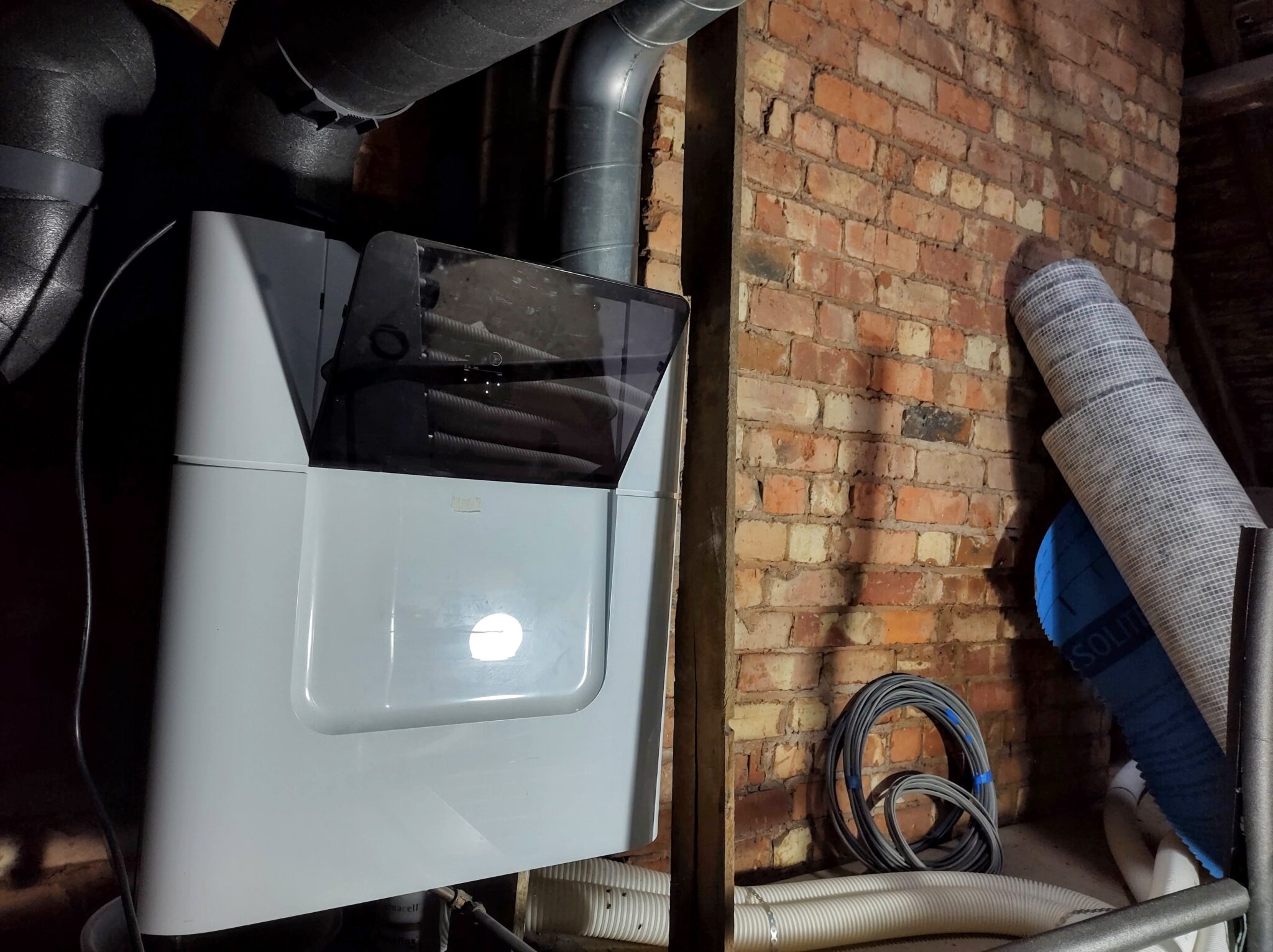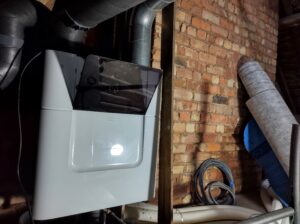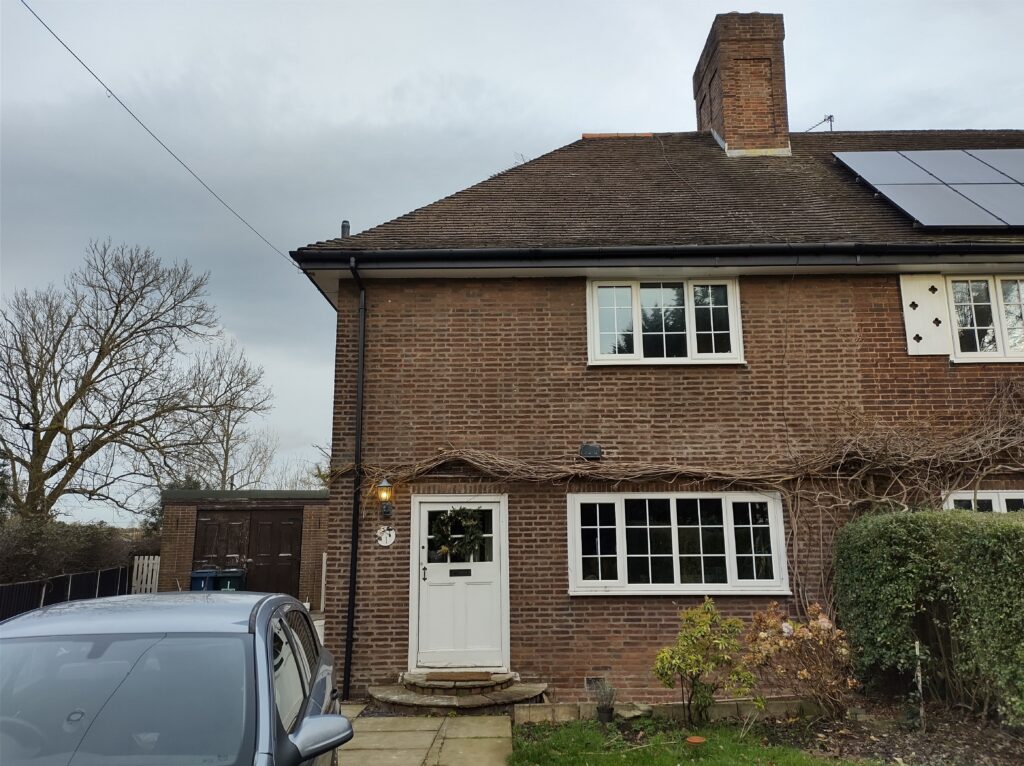We have completed the design and first fix installation of a Zehnder Q350 MVHR system with ComfoTube ducting into a 100-year-old cottage that’s undergoing a low energy retrofit upgrade. The MVHR system will improve the indoor air quality, comfort and energy efficiency, but also protect the century-old building fabric by ensuring indoor humidity is dealt with consistently.
The cottage is located in a semi-rural setting which, although far from the city, can have poor outdoor air quality, particularly on very cold days when rural homes fire up their oil boilers and open fireplaces.
The Q350 MVHR is located in the loft on a wall hanger, with pre-insulated ducting to roof cowls for the intake and exhaust of air. 75mm ComfoTube ducts run along the externals of the loft eaves and drop down carefully into the first floor rooms. Ducts also drop down to the lower floors using a small amount of boxing at the sides of the chimney stacks.
The cottage has a floor area of 130m2 and didn’t previously have any ventilation – no trickle vents or kitchen/bathroom extractor fans, so the MVHR system is a vast improvement.
Old homes require careful retrofit construction techniques
The cottage is being very sensitively renovated with:
- Lime plaster and 40mm woodfibre insulation on the external solid brick walls – these are vapour permeable materials which allow water vapour to pass through the building fabric harmlessly
- Increased fabric airtightness via the closing of chimneys, airbricks and the use of Tescon Vana and Contega Solido SL airtight tapes on window reveals and intermediate floor joists
- Rockwool and PIR insulation at roof rafter level
- New plumbing and re-wiring
- Accentuation of period features previously hidden by 1970s re-decoration
The client said:



Hi Patrick, I have tried to send you an email regarding a new build that I am in the process of, but the email keeps bouncing back. My details are attached if you would like to make contact?
Steve
Hi Steve, Yes, I’ll send you an email today.
Best wishes,
Patrick
How do you close airbricks but maintain sufficient ventilation for joists etc?
Thank you for your articles, I find them so interesting as I’m interested in a retrofitted MVHR system for my 60’s detached house!
Hi Abby,
You’re right that you can’t close air bricks externally if they are ventilating underneath a suspended timber floor (or a cavity within brickwork). Instead, you seek to make the joists/subfloor airtight and insulated at that line. Below the floor is still cold and breezy, and the insulation and airtightness stops that from getting through the floor, so the home is warm and comfortable. You can insulate between the joists with a membrane, or you can send a little robot down (seriously) that sprays insulation foam up at the joists.
For an intermediate floor in which joists sit within the brick wall, this can be an airtightness issue as they often have gaps that again enters the ventilated cavity to outside. It’s quite difficult (and the reason a lot of retrofits fail their air test), but you have to wrap each joist airtight with a tape and make the inner brickwork airtight with a parge coat or airtight membrane or similar. Both scenarios require pulling up the floor, but they do make a huge difference.
I will do a longer post with images to explain this as it’s an important topic for retrofit homes, but I hope this helps.
Best wishes,
Patrick
Hi Patrick, thanks so much for your reply. I look forward to that post, wish I had your knowledge. Don’t think I could ever do any work myself but I think it pays to be informed 🙂